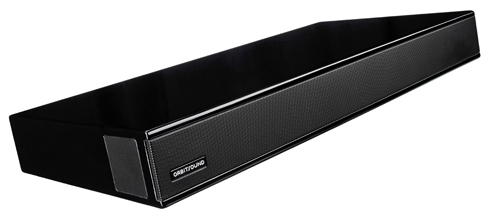What Hi-Fi? Verdict
A powerful, punchy and detailed sound is let down by a lack of subtlety and frustrating operation
Pros
- +
Big, loud, spacious sound
- +
Strong, clear sound with good weight and energy
- +
Deep, rich bass
- +
Better than TV sound
Cons
- -
Could be more subtle and articulate
- -
Build quality could be better
- -
Remote is frustrating to use
- -
No display
- -
No Bluetooth
Why you can trust What Hi-Fi?
The new Orbitsound SB60 AirSound soundbase looks like a larger version of the company’s T12v3 soundbar.
It sounds like it, too, which is great news. It’s just a shame it’s a bit of a pain to use…
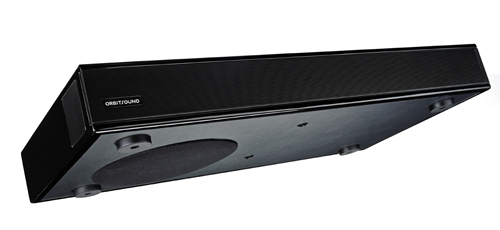
Sound quality
The SB60 delivers a signature Orbitsound performance: loud, spacious and tremendously weighty. It’s a robust performance, packed with energy to liven-up the sound of daytime telly.
It’s got plenty of punch and attack, with a 13cm downward-firing subwoofer doing all the heavy lifting. Bass notes are deep, luscious and full of rumble – maybe a little too much at times.
The roar of engines on Top Gear is loud and aggressive, although a touch of tautness would make the SB60 sound even more exciting.
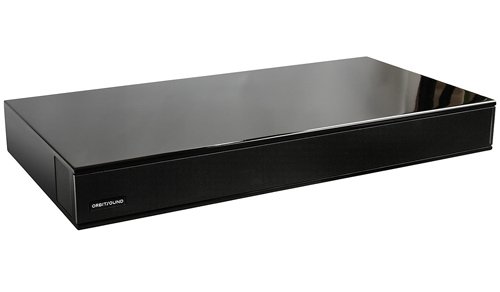
But the Orbitsound SB60 isn’t just bluntly loud. It can distinguish between different acoustic spaces, easily delivering changes in scale from outdoor scenes to indoor conversations.
It has two side-firing speakers (also seen on the T12v3 and T9 soundbars) that are essential in spreading that big sound across the room.
So make sure you leave plenty of space around the SB60, and don’t block those side speakers.
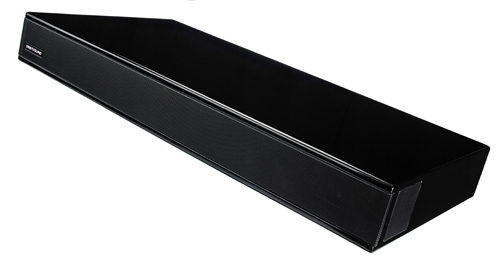
Despite the emphasis on a rich, bassy sound, the SB60 still has plenty of bite in the top end.
Voices sound direct, clear and emotive, but it could do with more refinement and subtlety to compete with the superb Canton DM 50.
The Maxell MXSP-SB3000 also offers a cleaner, more precise sound for less money.
Build quality
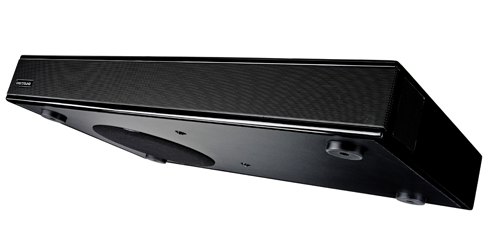
At first glance, the Orbitsound SB60 catches the eye with its sleek, glossy black finish. But look closer and the glossy finish attempts to mask the cheap-feeling build quality.
The wooden shell feels rather hollow when tapping on it, and it’s not as finely finished as its rivals – we’d like more heft and finesse for £300.
The Canton DM 50, for example, gets the build and finish spot on, though admittedly for £100 more.
There is an extra feature: you can swap the black front panel for a silver one. Orbitsound includes the extra front panel in the box, but we preferred keeping it all black.
Connectivity and features
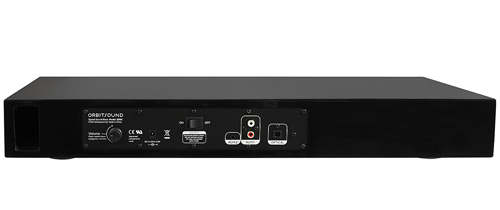
Digital connections are limited to a single optical input, while RCA inputs and a 3.5mm jack take care of the analogue side. There’s no Bluetooth streaming, though – something many of its rivals offer.
Where the Orbitsound excited us with its enthusiastic sound quality, its meagre feature count is less inspiring.
First, there’s no display. And that, coupled with a poorly designed remote control, makes daily use rather frustrating.
There’s a single LED indicator, but it isn’t particularly informative. There’s no way of telling which input you’re switching to, what level the bass and treble are on (you can adjust them separately), or how high or low the volume is (although, admittedly, your ears aren’t bad for that).
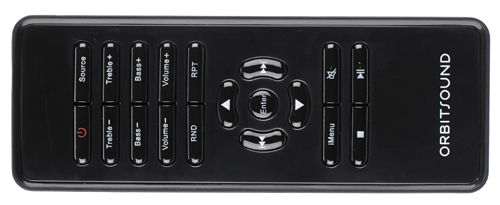
The remote is slim and light, but the cluster of slender buttons is annoying. The volume controls aren’t distinguishable from the treble/bass level buttons, so trying to use them instinctively is out of the equation.
Bigger, simpler buttons would have been far more useful than the playback buttons.
Verdict
So where does that leave the Orbitsound SB60 soundbase? If we were judging it on sound quality alone, this would be a strong four-star performance.
It serves up a robust, wide and satisfyingly punchy sound that needs only a hint more refinement – there’s plenty to like about its performance.
But when you have to live with a product on a daily basis, little things – such as how intuitive the remote is to use, whether it has a display, how nice it is to use – matter. A lot.
We found it frustrating to use, and its limited features further dispirited us. For a £300 price tag, we expect more for our money, and the Orbitsound’s limitations and fiddly use was enough to mark it down to three stars.
What Hi-Fi?, founded in 1976, is the world's leading independent guide to buying and owning hi-fi and home entertainment products. Our comprehensive tests help you buy the very best for your money, with our advice sections giving you step-by-step information on how to get even more from your music and movies. Everything is tested by our dedicated team of in-house reviewers in our custom-built test rooms in London, Reading and Bath. Our coveted five-star rating and Awards are recognised all over the world as the ultimate seal of approval, so you can buy with absolute confidence.
